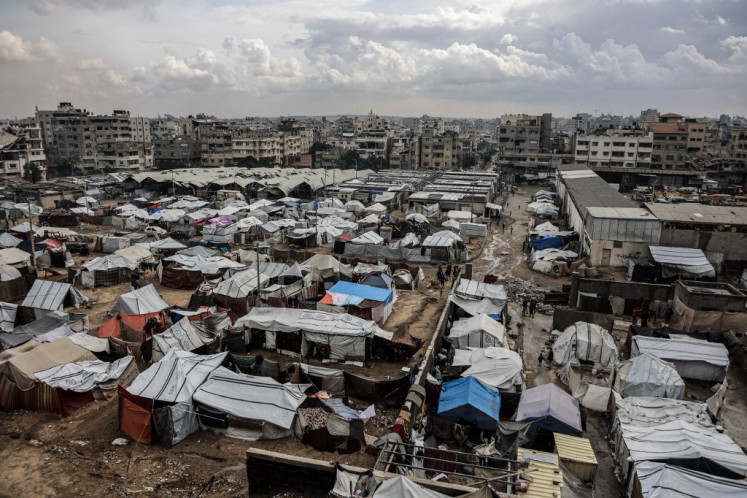Popular Reads
Top Results
Can't find what you're looking for?
View all search resultsPopular Reads
Top Results
Can't find what you're looking for?
View all search resultsChildren exposed to lead poisoning in Greater Jakarta
Research conducted in several areas in Greater Jakarta showed that a large number of children suffered from severe lead poisoning
Change text size
Gift Premium Articles
to Anyone
Research conducted in several areas in Greater Jakarta showed that a large number of children suffered from severe lead poisoning.
The survey conducted by the Committee for the Phaseout of Leaded Gasoline (KPBB) and the New York-based Blacksmith Institute checked the level of lead in the blood of 400 children who lived in areas with high levels of exposure to lead, including 71 spots used as dump sites for used batteries and lead smelters.
“All the children living in areas for dumping used batteries had a blood lead level [BLL] way above World Health Organization [WHO] standards, which is 10 micrograms per deciliter of blood,” KPBB coordinator Ahmad Safrudin said Thursday.
The study said that in Cinangka village in Bogor, children living in the vicinity of a battery recycling plant had an average BLL of 32.62 micrograms per deciliter.
A 7-year-old girl in Cinangka was found with a BLL of 60 micrograms per deciliter, while the lowest was a 6-year-old boy with a BLL of 16.2 micrograms per deciliter.
Lead affects a number of body functions, damaging organs and tissues including the heart, bones, intestines, kidneys and reproductive and nervous systems. People can be exposed to lead through contaminated air, water, soil, food and consumer products. High levels of lead in the blood also adversely impacts children’s intelligence.
The survey also found that in Curug, Tangerang, the site of an illegal lead smelter, the average BLL for children was 24.18 micrograms per deciliter. The highest lead level, 47.80 micrograms per deciliter, was found in the blood of a 6 year old.
Safrudin blamed the lead poisoning on illegal businesses in the areas.
“We suspect illegal activities are to blame for the high level of lead poisoning. This has gone on for a long time and in the end it is the children who become the victims,” he said.
The KPBB and the Blacksmith Institute issued five recommendations for the government to counter lead poisoning.
“First we need to clean up the sites. We propose that Cinangka village be the site for a pilot project.
Second, we need to address the state of health of the communities in the sites by involving all stakeholders,” Safrudin said.
He added that it was urgent to set up guidelines for local governments to deal with lead poisoning as well as to build better partnerships with used battery recycling plants, including dealing with environmental impacts.
What was also crucial, Safrudin said, was to campaign to raise awareness about the hazards lead posed to the public, government officials and businesses involved.
The government said it would follow through on all the recommendations.
The deputy assistant at the Environment Ministry’s hazardous waste management and rehabilitation of contaminated sites division, Ridwan Tamin, said the ministry would carry out its own survey.
He added that if from the ministry’s study indicated foul play that endangered lives, the battery recycling plants would be punished and would have their license revoked.










